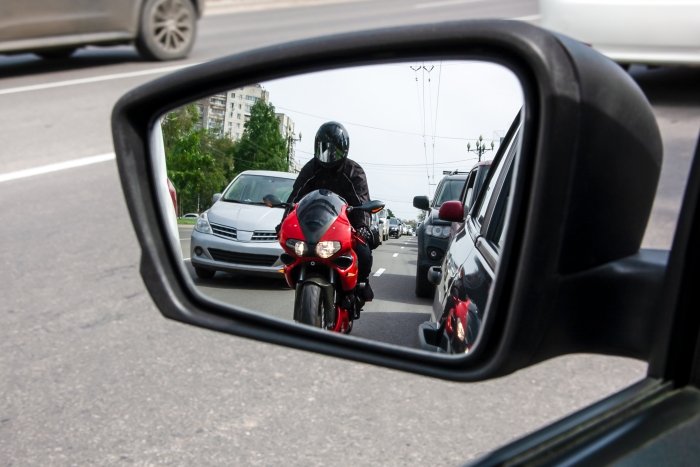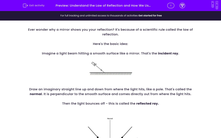Ever wonder why a mirror shows you your reflection? It's because of a scientific rule called the law of reflection.
Here's the basic idea:
Imagine a light beam hitting a smooth surface like a mirror. That's the incident ray.
.jpg)
Draw an imaginary straight line up and down from where the light hits, like a pole. That's called the normal. It is perpendicular to the smooth surface and comes directly out from where the light hits.
Then the light bounces off - this is called the reflected ray.
 .
.
Now, the cool part! The angle at which the light hits the mirror (between the light ray and the normal) is exactly the same angle that it bounces off at (between a reflected ray and the normal).
The angle that the light hits the mirror is called the angle of incidence. The angle that the light bounces off the mirror is called the angle of reflection.
Because of the bounce angle, the reflected light rays travel as if they came from behind the mirror. That's why you see yourself in the mirror, even though the light isn't actually coming from there!
Mirrors are super useful in daily life! We use them to check our appearance, of course. But they also help us to see around corners or in crowded spaces by reflecting our surroundings. Rear view and wing mirrors use reflections to show drivers what's coming up behind or alongside them.

Have you ever seen large, curved round mirrors on narrow bendy roads? No, they aren't for quick hair checks! They help traffic see around blind corners in case other cars are coming and the road isn't wide enough!

Dentists also use tiny mirrors to see all your teeth! Plus mirrors are used in periscopes to see around corners and in telescopes to help get as much light into the eye, to allow us to see into the dark night sky.

In this activity, let's think about how mirrors work and how they help us!








